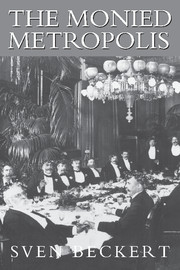Book contents
- Frontmatter
- Dedication
- Contents
- Maps, Graphs, and Illustrations
- Acknowledgments
- Abbreviations
- The Monied Metropolis
- Introduction
- Part I Fortunes, Manners, Politics
- Part II Reluctant Revolutionaries
- Part III A Bourgeois World
- 7 Democracy in the Age of Capital
- 8 The Culture of Capital
- 9 The Rights of Labor, The Rights of Property
- 10 The Power of Capital and the Problem of Legitimacy
- Epilogue
- Notes
- Index
8 - The Culture of Capital
Published online by Cambridge University Press: 05 July 2014
- Frontmatter
- Dedication
- Contents
- Maps, Graphs, and Illustrations
- Acknowledgments
- Abbreviations
- The Monied Metropolis
- Introduction
- Part I Fortunes, Manners, Politics
- Part II Reluctant Revolutionaries
- Part III A Bourgeois World
- 7 Democracy in the Age of Capital
- 8 The Culture of Capital
- 9 The Rights of Labor, The Rights of Property
- 10 The Power of Capital and the Problem of Legitimacy
- Epilogue
- Notes
- Index
Summary
By the 1880s and 1890s, New York's merchants, industrialists, and bankers had transformed themselves more than ever before into a self-conscious class. They saw themselves and were seen by others as a distinct social group, a collective identity they articulated in numerous ways as class position and class identity corresponded to a degree unknown before. Though divisions of a cultural and political kind persisted, they did not rival those that had had their roots in slavery and the Civil War. The conflicts of the antebellum years had now finally been left behind, replaced by widespread agreement on the fundamentals of the political economy of a free-labor United States. At the same time, however, rapid industrialization deepened social cleavages, and the combined effects of rising inequality and proletarianization created tensions that, as we have seen, at times drove workers and farmers to mobilize collectively, in turn motivating upper-class New Yorkers to define themselves against these “dangerous classes.” This greater sense of class identity, as well as the overcoming of the deep divisions that had characterized the age of the Civil War, enabled wealthy New Yorkers to translate their ever-growing economic power into unprecedented influence on the institutions and policies of the state. Indeed, by the last quarter of the century, their power was such that not presidents but prominent New York entrepreneurs – such as John D. Rockefeller, J. Pierpont Morgan, and Andrew Carnegie – came to represent the age.
- Type
- Chapter
- Information
- The Monied MetropolisNew York City and the Consolidation of the American Bourgeoisie, 1850–1896, pp. 237 - 272Publisher: Cambridge University PressPrint publication year: 2001

